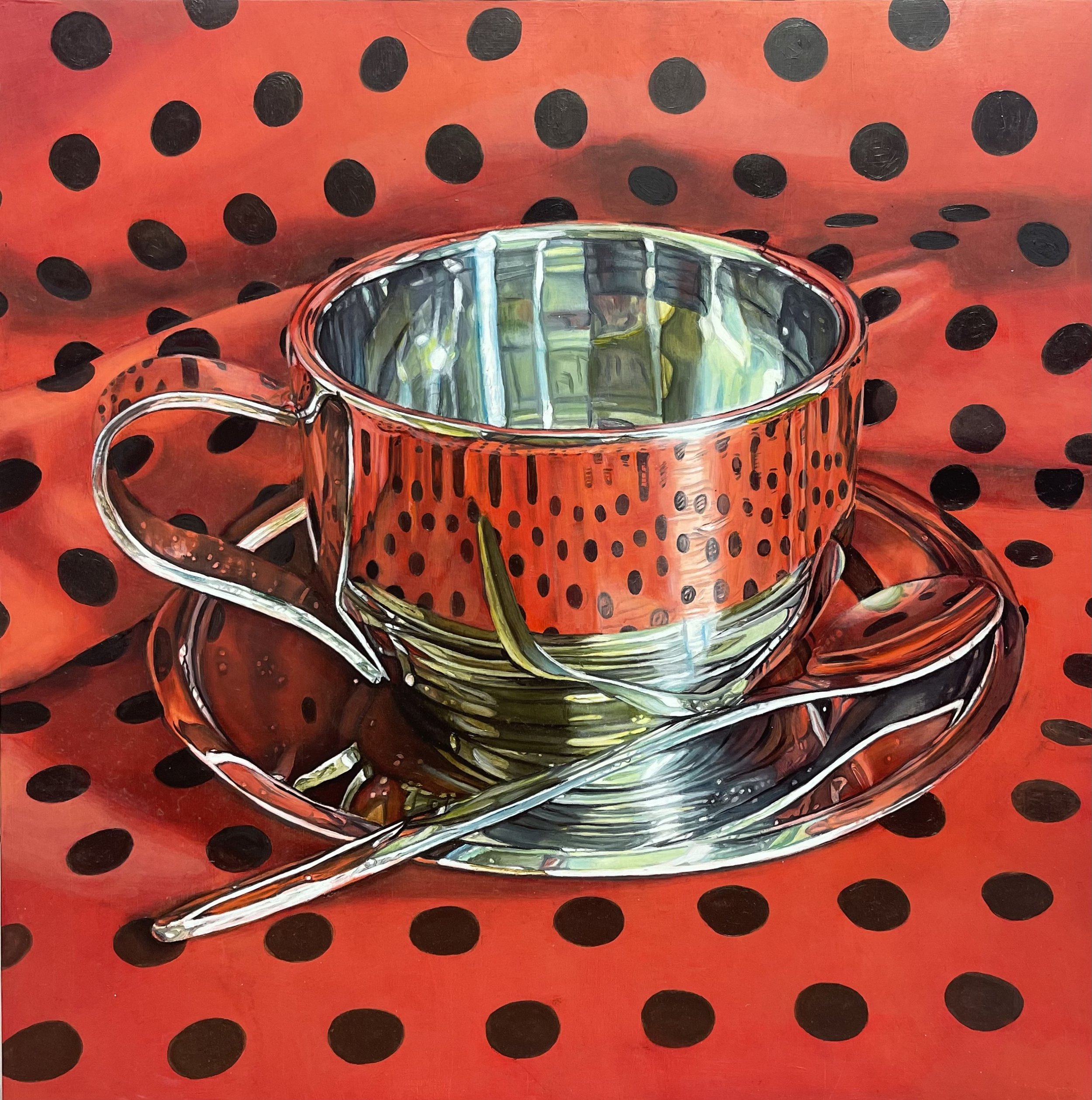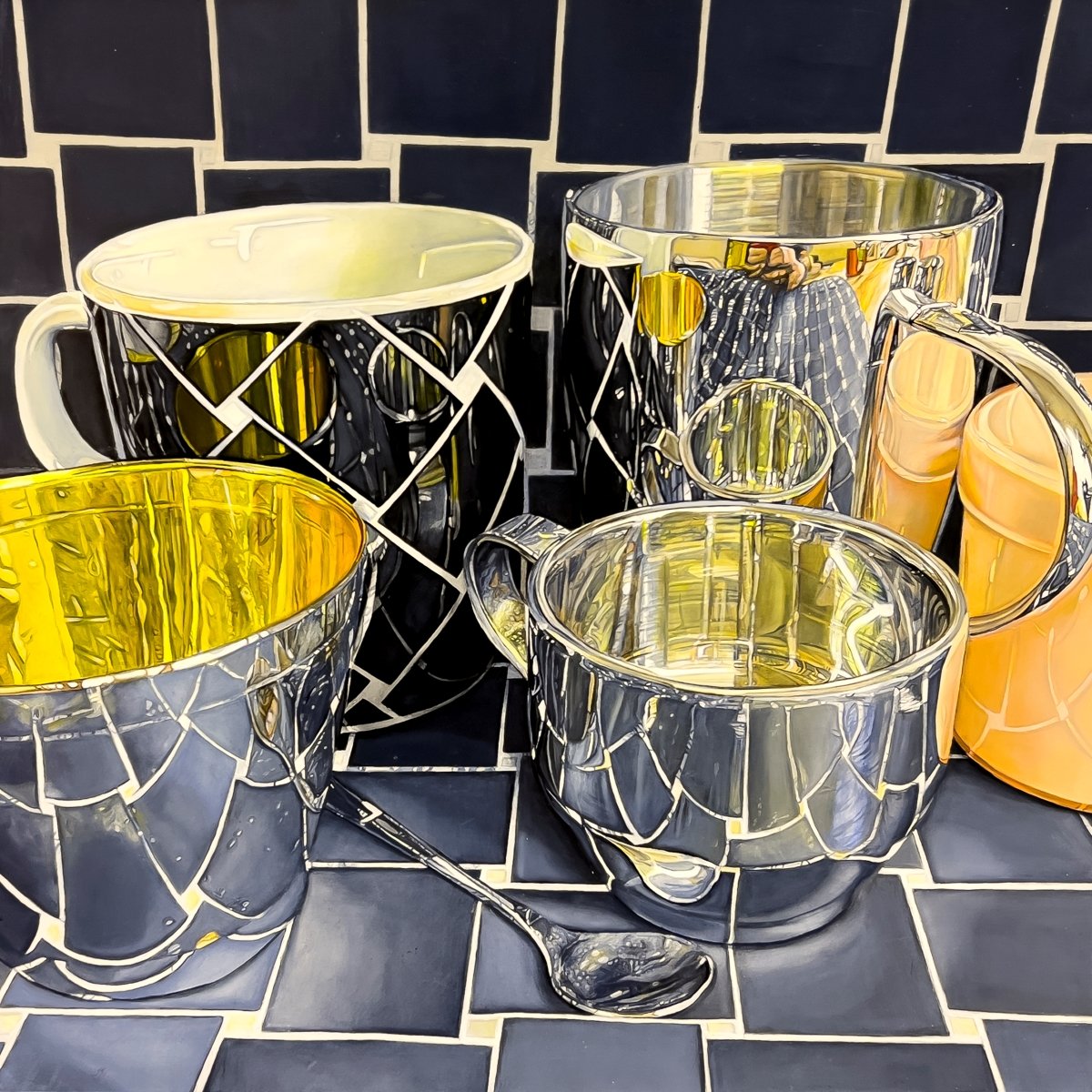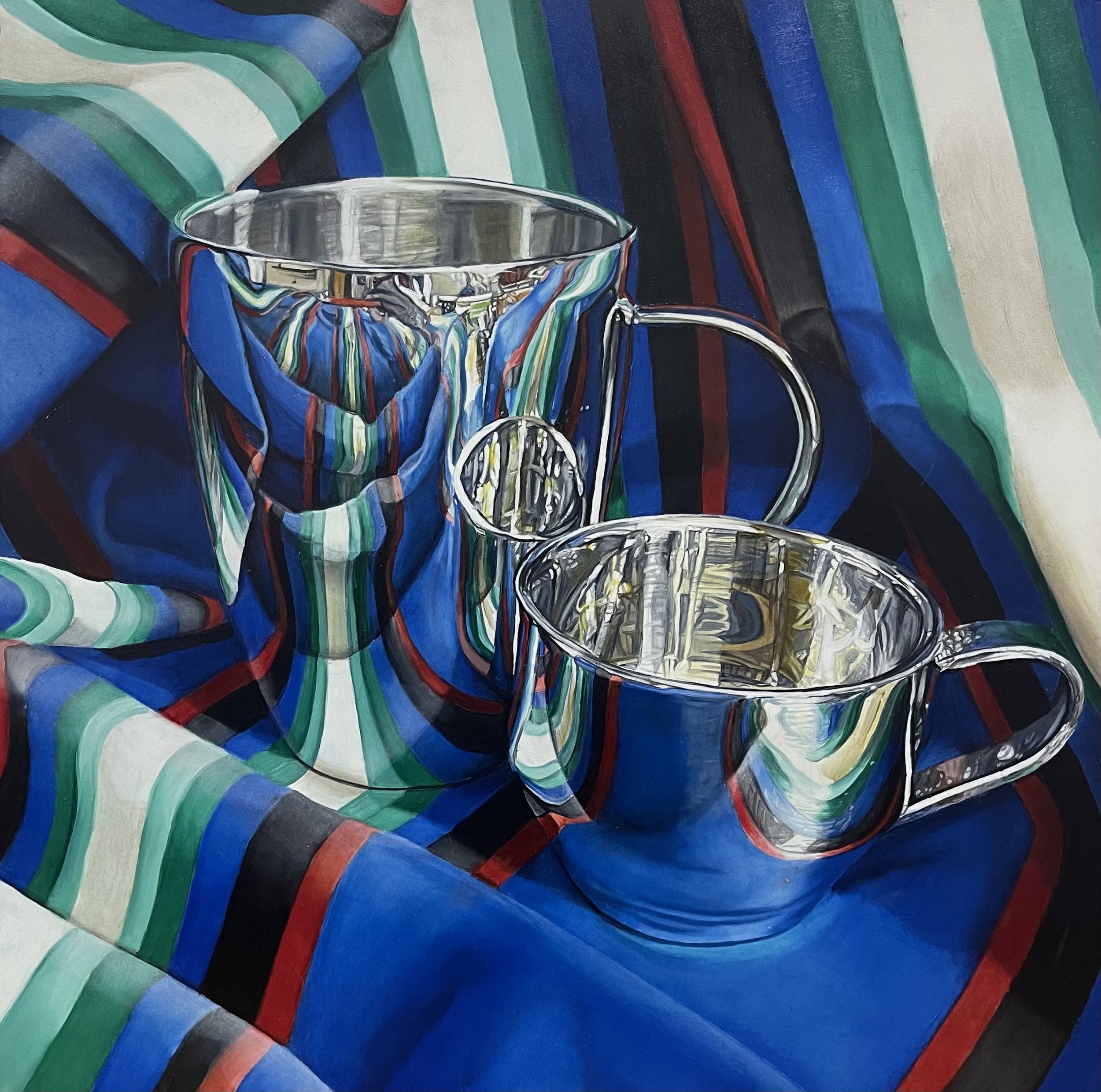Celebrating 35 Years in the Historic Third Ward of Downtown Milwaukee
Read MoreMark Mulhern 2024 MOWA Retrospective
WEDDING IN BRITTANY, Oil on Linen, 70 x 80”
Mark Mulhern’s Retrospective will take place at the Museum of Wisconsin Art in April of 2024. a showcase of his work over the years containing Paintings, Gouaches, Monotypes, and Prints. His show will go up starting the 27th of April and be on display through July 21st of 2024.
Read MoreMary Bero Receives 2023 Forward Art Prize Winner
RED WALLFLOWER, Mixed Fiber Media, 14 x 10”
Mary Bero is to receive the 2023 Forward Art Prize
Read MoreDerrick Buisch featured in Shepherd Express article
*Click HERE to read article on Shepherd Express website
Derrick Buisch’s ‘Remarks in Color’ at Tory Folliard
BY SHANE MCADAMS - MAY 24, 2023
I finally made it in to see a show of paintings by Derrick Buisch at Tory Folliard this week (up through May 27) and it caught me off guard a little. Not because his exhibition “Remarks in Color” is mind-bendingly beyond what I expected from him; but rather because it was exactly what I expected, in just the right way, like seeing an old friend.
I’ve known Buisch’s work for a long time, and he’s one of the few artists I can honestly say gets me incrementally closer to possessing a complete understanding of his point-of-view with each painting I see. Each piece builds not on the last, but towards an entire perspective. Like how a conversation with someone evolves slowly over time, revealing detail after detail about the underlying character of the person across from you. It doesn’t matter where it goes, because it’s all revealing an indirect portrait of an entire multi-dimensional human personality. This show didn’t just do that, it revealed the nature “that” in general.
When one first encounters Buisch’s pared down graphic forms, often set against a monochromatic background, they can’t be blamed for wondering what the storyline is. His works are almost always spare and economical. Bluespikesspring for instance isn’t going to blow your mind with an epic yarn, but it’ll give you plenty of threads to follow through his work. The 24 x 24-inch spiky, powder-blue form against a tangerine background tells you just a few things about what he’s on about. But you only learn this as you keep on rapping with it. Color Cat Chart #4 offers another enclosed shape of a thick impasto line. One starts to infer that the subjects are meant to live in an intentional purgatory between shape and figure, between abstract and concrete, and between graphics and rendered form.
Primary Colors
His use of color and pattern ply similarly ambiguous territory. In the case of Bluespikesspring and Color Cat Chart #4, each employs an almost academically referential scheme. The former a complementary, optical tension, and the latter a primary color chart. As for pattern and surface, the former uses a from-the-tube-impasto line on a flat field and the latter a messy-but-regular benday pattern on a clean unmodulated background.
The conversation continues to move. Creature Weather Head, another marginal lifeform, lies on a bed of the dense, matte primary-red that sent me back to the tangerine background in Bluespikesspring, and made me reconsider its nature. Like I might’ve a remark in a good verbal exchange, I recalled something in the past and folded it back into the moment. It’s a dynamic, reciprocal, and always unfolding story. And this is true of Buisch’s work beyond the canvas, from his record collection, to the ‘zines he’s produced, to the ephemera he collects, to the photographic observations about improbable color moments he takes. Not everyone is privy to this comprehensive bag of things, but it’s not important because the paintings get there in good time.
Buisch’s work made me think about how every artist I know has an at-the-ready way of addressing gimmicky art contrivances; the kind fathers-in-law and first year art students trot out as “really amazing!!!” I for instance tell my students that most artists realize that the opportunity to make a photorealistic portrait of Marilyn Monroe out of Gummi Bears is always available, it’s just not taken. A friend once told me he simply calls such things “Mad Libs Art.” It’s probably the same with any creative pursuit. I’m sure Max Richter or Wynton Marsalis both know that a chestnut like “California Gurls” by Katy Perry is always out there, but they choose to go in another direction, in pursuit of open waters and their own unique intercourse with the world. I reminded myself as I left Tory Folliard and Derrick Buisch’s latest paintings that it’s the journey, not the destination, the conversation not the consummation.
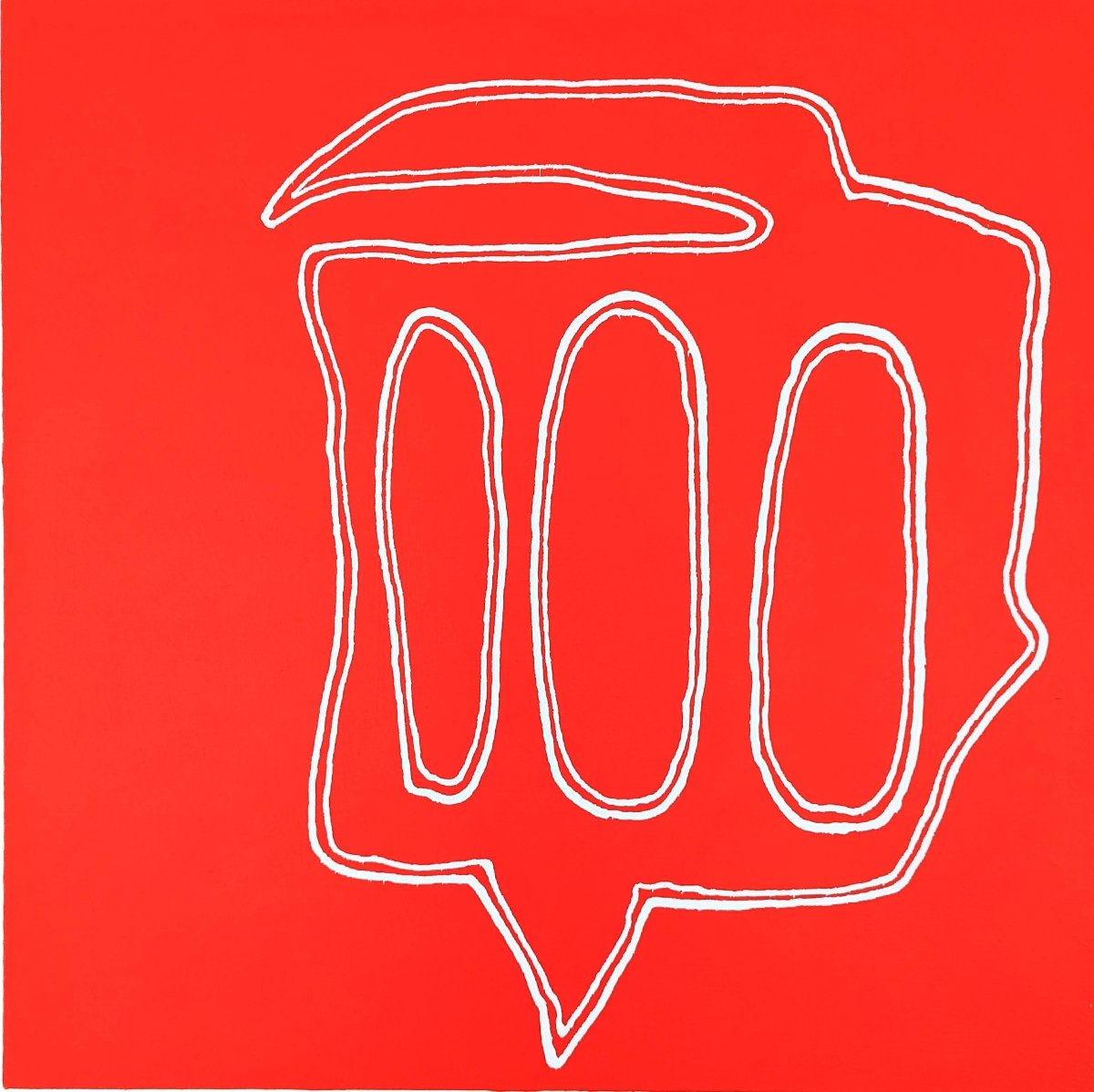
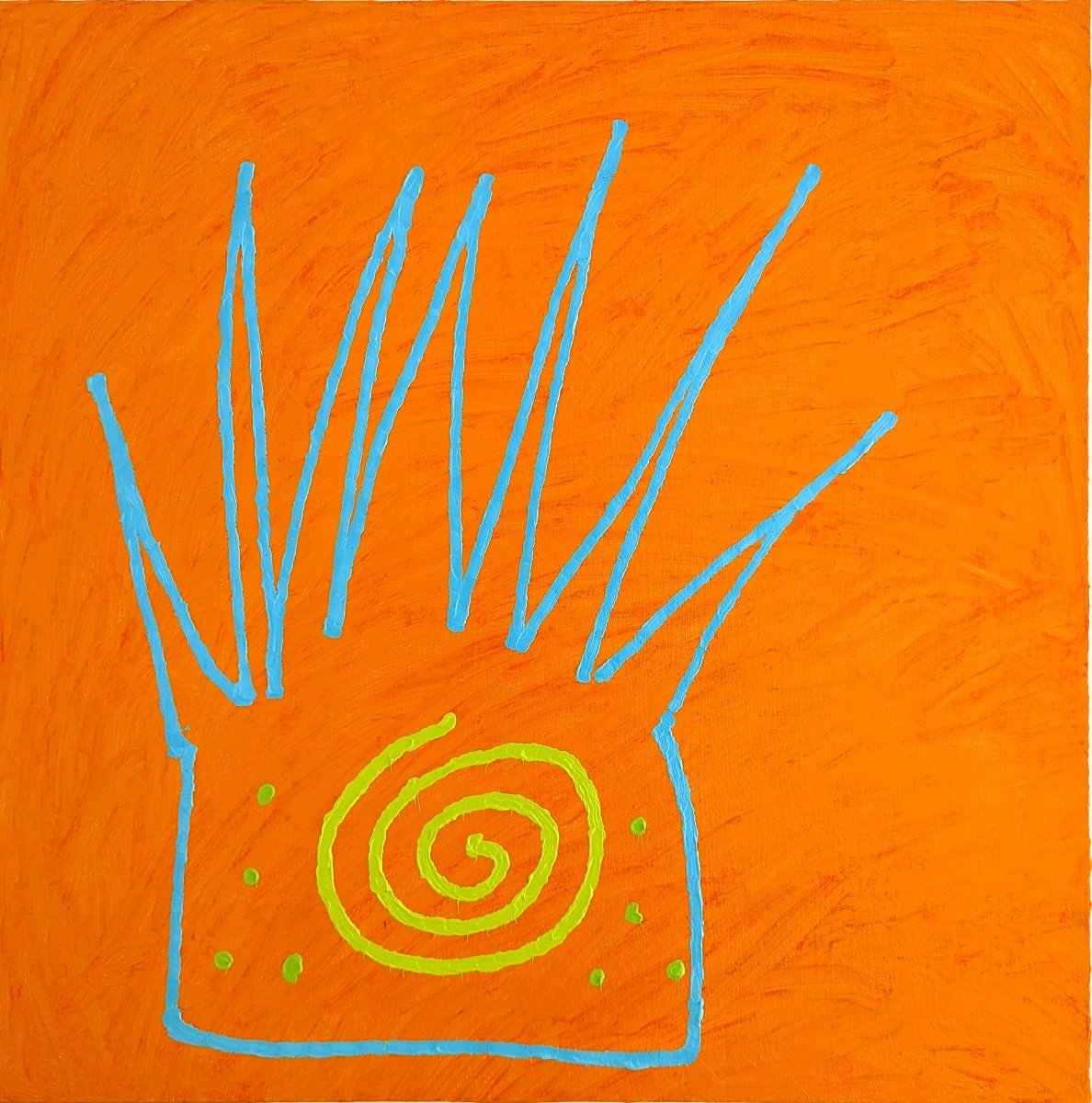
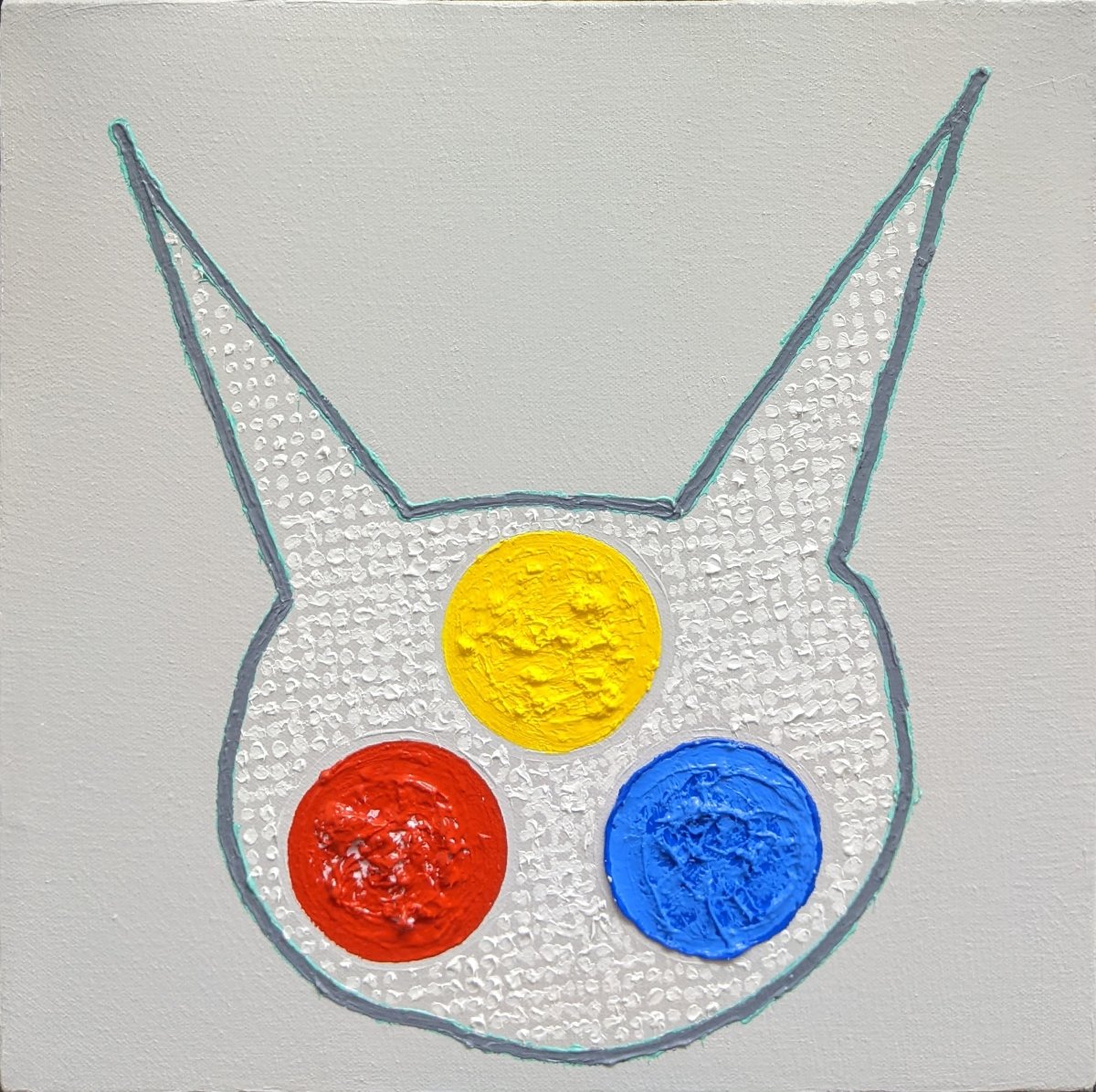
Laurie Hogin featured in Chicago Life Magazine
*To see the article on the Chicago Life website, please click HERE
CHICAGO ARTISAN:
Laurie Hogin
The fine artist paints her view of the natural world, and she wants us to stop destroying it and ourselves
BY PAMELA DITTMER MCKUEN
When Laurie Hogin was growing up in a suburban neighborhood outside Midtown Manhattan, she found sanctuary from a chaotic home in a vast nearby woodland. She learned to name. native plants and trees and identify songbirds, wildflowers, fungi, and mosses. Deep into the flora and fauna, and accompanied by her two best friends, she found solace and healing.
Then, their beloved forest became an illegal dumping ground heaped with household garbage and industrial waste. The outraged, saddened trio of children. raised money for the World Wildlife Fund, and Hogin made propaganda posters for her school homeroom.
"I documented what was happening by drawing it. We didn't have cameras, so I drew dumps in the woods," says Hogin, a fine artist, university professor, environmental activist and rescuer of unwanted dogs. "Essentially, I am still doing the same thing."
Hogin is internationally recognized for her allegorical paintings of mutant animals and plants in dioramas of freakish menageries or individually posed and ornately framed, like classical still lifes. At first glance, her psychedelic-hued subjects appear as warm and inviting as a Walt Disney cartoon, but closer inspection reveals deep nuance and even horror.
In her surreal world, remote vistas are desolate. Monkeys with human faces are screaming and gnashing. Bunnies sport protective tiger stripes. Impossibly pigmented reptiles are slithering amid human skulls. Albino animals and fruits are void of essence.
These are not peaceable kingdoms. They have been subjugated by habitat destruction, pesticides, global warming, genetic modifications, addiction, violence, commercialism, greed and myriad other societal ills.
"It's the difference between the way the natural environment is traditionally depicted and what's actually going on with it," Hogin says.
Mutant Animals as Avatars
Depending on the work, Hogin's mutants are avatars for the human race or symbols of specific human behaviors. Some compositions are political satire, and others are self-portraits. Animals are more fun for her to paint than humans, and they provide greater opportunity for colorization and caricature. A monkey brandishing a firearm or a zoned-out candy-pink guinea pig on tranquilizers is more palatable to viewers than a person doing the same thing.
"Humans are not as separate from evolutionary biology as we might think," she says. "We, too, are animals. We do aspire to rationality, and that's important and a good thing, and something we have evolved to do. But we also are driven by our instincts as part of our evolutionary heritage."
Every element of her work, even her titles, is layered with meaning. Firebirds, which are folkloric creatures who are reincarnated through fire, symbolize adaptation and survival. Rabbits represent feminism and ubiquity.
CMYK Valentines, a reference to the cyan, magenta, yellow and black ink plates used in some printing processes, introduces romantic love in the digital age.
My Pretty Ponies of the Apocalypse, a series of seven horse portraits, is a mashup of cultural touchstones: "My Little Pony" toys by Hasbro, All The Pretty Horses novel and movie, and the Four Horsemen of the Apocalypse of Christian literature foretelling the end of times. The paintings are small, relatable
to her collection of toy horse figurines, and each is tagged with the chemical name of a common plastic both essential to and destructive of modern life.
Art for a Healthier Society
"I don't think you are going to change policy with artwork," she says. "What you can do is influence a culture. The fact that art exists in society makes the society healthier because it makes you think more broadly. As an artist, I do my part in that. My hope is to evoke empathy toward all creatures and the ecosystems that support them."
Hogin earned her Bachelor of Fine Arts degree from Cornell University in Ithaca, New York, in 1985, and her Master of Fine Arts degree from the School of the Art Institute of Chicago in 1989. While a grad student, she worked for an environmental activism group focused on pollution and human health. She also met a fellow student, Greg Boozell, a documentary photographer and filmmaker, whom she married in 1995.
After graduation, Hogin launched her studio practice and exhibition career, but her ultimate goal was to teach. She held several adjunct positions, and in 1997 joined the faculty at the University of Illinois Urbana-Champaign, where she is a professor of studio art in the School of Art and Design.
She and Boozell reside downstate in a rural area near forest, prairie, river and trails for running and biking. They live with their two adopted mixed-breed dogs and studio companions, Reggie and Xena.
Hogin's artistry has been exhibited at such prestigious venues as the DePaul Art Museum, DePaul University, Chicago; California Center for the Arts, Escondido; New Museum, New York; Art Institute of Chicago; Addison Gallery of American Art, Andover; and Contemporary Art Center, New Orleans.
She is represented by Tory Folliard Gallery in Milwaukee, Koplin Del Rio in Seattle and Littlejohn Contemporary Art in New York.
"I have always admired Laurie's work, from her meticulous technique to the research and development that deepen the meaning of every brushstroke," says Rockford Museum of Art executive director and curator Carrie Johnson. The museum in 2020 put on an exhibition of Hogin's paintings and sculptures accompanied by her favorite songs and inspirational books.
Says art dealer Tory Folliard: "It is that tension between the beauty of her work and the troubled scene that lies below that I find most compelling. I may not know the specifics of the chaos, but I can certainly tell that something is very wrong in this world, and I want to know why."
Hogin's life and work have gone through many changes over the decades, but she's never left the woodland of her youth far be- hind. Metaphorically speaking, her "woods" have only expanded.
"As you can see, I've never really stopped making those posters," she says.
Bethann Moran Handzlik featured in Fine Art Connoisseur's "Five to Watch"
Five to Watch
by: Allison Malafronte
The plein air paintings being created by BETHANN MORAN HANDZLIK (b. 1965) are impressive not only for the amount of detail, vibrant color, and emotional content they capture but also for their sheer size, often averaging 50 inches in each direction. The Wisconsin artist does not paint small sketches outdoors to quickly gather information for larger studio landscapes. Rather, she completes almost the entire painting outdoors, sometimes spending weeks in the same spot to capture what she sees.
Take This Joy Is Electric, for example, which found the artist standing along a busy highway in Whitewater, Wisconsin, for more than two weeks in order to compose this large scene of a sunflower field. “No doubt there are challenges to working on large canvases outside for a prolonged time,” Moran-Handzlik admits. “I painted this at the end of August — I got sunburned and wind-whipped and had to strap the canvas to my van at one point to keep it from blowing around. However, it’s worth the effort. The changing light, animal sounds, and smell of the air all contribute something toward the final painting, as it evolves within the same conditions it depicts.”
BETHANN MORAN HANDZLIK (b. 1965), This Joy Is Electric, 2021, oil on canvas, 52 x 40 in.,
Moran Handzlik describes her experiences painting in nature in almost spiritual terms; during many hours of concentration she will lose herself in the composition, snapping back to reality only due to a pesky mosquito bite or falling temperatures. “Sometimes while painting, language leaves me,” she says. “Sometimes I feel like I disappear. When the painting is complete the viewer can re-see, re-experience what I saw, and then be drawn repeatedly into contemplation of everything within the painting and within themselves. My hope is that the paintings will help create an appreciation for the natural world and assist people on their paths toward joy.”
Moran Handzlik earned a B.A. from Wisconsin’s St. Norbert College and then an M.F.A.from the University of Wisconsin — Milwaukee. She has taught at several universities and teaches workshops regularly. This summer she will offer a plein air workshop at the Peninsula School of Art in Door County, and early next year she will return to Scotland to teach and paint. Moran Handzlik was recently a guest on artist Jeff Hein’s The Undraped Artist Podcast. She and her husband, the poet Patrick J. Moran, have three children and live in Fort Atkinson, Wisconsin.
Bethann Moran Handzlik featured in "The Undraped Artist" Podcast
The gallery is pleased to announce that Bethann Moran Handzlik was featured in The Undraped Artist podcast. To watch or listen please see below.
Jason Rohlf Featured in Hyperallergic
*To read the original article please click HERE
A View From the Easel
This week, artist studios in Ohio, California, Queens, and Brooklyn.
Lakshmi Rivera Amin February 27, 2023
Jason Rohlf, Williamsburg, Brooklyn
My Loft Law-protected studio is located in a heavily redeveloped portion of Williamsburg, Brooklyn’s waterfront. It’s been my home and workspace for 23 years and the ever-changing neighborhood has become a constant reminder to be grateful for this creative space. Two long tables form the heart of the studio and daily piles of upcycled shop rag paintings invite the start of every morning. Work in progress is everywhere allowing for visual cross-pollination to happen. Studio plants hug the window and are constant inspiration. Natural phenomena appear in nearly every work and I like to think of the space as a field outpost for gathering observations both real and imagined.
William Nichols featured in Chicago Life Magazine
*To read the original article on the ChicagoLife website, please click HERE
CHICAGO ARTISAN:
Landscape painter William Nichols portrays the journey, not the destination
BY PAMELA DITTMER McKUEN
Imagine yourself hiking a woodland trail, dodging wayward branches and muddy creeks in pursuit of a vaunted overlook with far-reaching views of astounding natural beauty. Finally, you arrive and snap a few photos for the gram. Then you turn around and scurry back to the trailhead.
William Nichols shows you what you missed along the way. The Skokie-based landscape artist forgoes mountain ranges and jeweled sunsets, instead focusing on the terrain. He simply paints whatever he encounters: the fallen log bisecting an unnamed stream, the random bough coated in lichen, a glimmer of late-day sunlight peering through the canopy, tangles of wild vegetation.
"What I do is not so much landscape but looking at nature up close," he says. "Most of my work is middle ground and foreground, which is a distinctive way of looking at nature."
As Lauren Ellis, who represents Nichols' work at CK Contemporary in San Francisco, puts it, "Unlike the typical landscape where you are looking at a composed vista, Bill brings you into the landscape in this immediate way where you feel you are experiencing it first-hand. It's like you are traversing the landscape and looking down as you walk."
Another aspect of Nichols' work that merits mention is the sheer size. His paintings are measured in feet rather than inches, almost life-size or greater, to immerse the viewer in the setting.
"When I'm looking at my (William Nichols) paintings, I'm inside that small section of garden or creek," says Tory Folliard, whose eponymous gallery in Milwaukee has repped Nichols since 1990.
A Change in Direction
Nichols began painting while attending high school in the late 1950s, a time of artistic turbulence. Surrealism, expressionism, abstractionism and pop were at the forefront, and he followed suit. He attended the University of Chicago and the School of the Art Institute of Chicago, where he was awarded his Bachelor of Fine Arts degree. He earned a Master of Fine Arts degree from the University of Illinois and did postgraduate study as a Fulbright-Hayes Scholar at Slade School of Art at University College in London. Afterward, he began a 25-year career teaching art at the University of Wisconsin in Milwaukee.
Although his early paintings sold well, by the early 1970s, Nichols was restless. He felt compelled to find his own style rather than continue to translate popular trends.
"It was difficult," he recalls. "You want to hang onto things around you that are successful and be part of the crowd."
Turning his attention to landscapes, he drew upon the joyous summers of his youth, which he spent with relatives in a wooded rural area of Wisconsin called Fall Creek. His days were filled with hiking, fishing and exploring, and, as a city boy, he reveled in the wonder and solitude of it all.
At first, he worked from memory with the belief that relying on photographs was a sort of cheating. Eventually, he realized the images in his mind didn't provide the depth of character he sought. In search of greater authenticity, he returned to the natural environment with a camera in tow. Many of his locations are mundane, perhaps the side of a road or an undistinguished forest. He donned hip waders and entered the water to shoot what he saw on shore.
A typical landscape positions the viewer on the bank, observing the water. Ellis says, "When you look at a William Nichols painting, you are in it."
The photographs provided subject matter but not a means to transition them to canvas. The obvious choice was realism, which he rejected as too harsh for the sentiments he wanted to convey.
"I would not be able to capture in any way, shape or form the sensibility I feel about nature, which has a softness and ambiguity and emotion to it," he says.
The technique he developed is a marriage of photorealism with the impressionism and abstraction of his early work. It's more complicated than this, but it involves thinning oil paint and applying it like watercolor. The consistency of the paint allows light to come through, reminiscent of a stained-glass window. Less manageable than undiluted pigment, it enables an amorphous quality to the work. When Nichols wishes to draw the viewer's eye to a particular area of a painting, he makes it sharper or stronger or bulkier.
"When you get up close to one of his paintings, it's abstract," Folliard says. "The further you walk away, the more it becomes super-real."
WINTER MORNING, Oil on Linen, 42 x 72”
The Traveler Comes Home
Nichols' work since 1974 has been featured in dozens of solo and group exhibitions worldwide, including the recent "Of Nature" exhibition at Tory Folliard Gallery. His paintings are held in the collections of an international clientele, such as Milwaukee Art Museum; Ringling Museum of Art in Sarasota, Florida; and Stanford University.
After he retired from teaching, Nichols and his wife of 50-plus years, Sandra, moved about the country for nearly two decades in search of a new permanent home. They tried Florida and Phoenix before returning to the Chicago area about a year ago and happily settling into a 16th floor condominium in a glassy high-rise.
He keeps a pretty tight work schedule, painting for a few hours every morning and afternoon, and he takes off a month or two each year for the couple to travel. At age 80, Nichols doesn't get into the woods to photograph these days, but he has a vast library of images and slides for reference. There's so much more to paint.
"If I have attempted to do anything fresh as a landscape painter, it is that experience of stopping to look at what can be just around us if we take the time to see it," he says.
Jeanette Pasin Sloan's New Paintings Featured in Art and Antiques
JEANETTE PASIN SLOAN is recognized to her complex still life paintings that combine multiple patterns and objects into one flowing image. Each painting, blending classic still life techniques with abstraction, is more than just the items she has combined. It is a story of the reflections and the light, and how they take on a world of their own. Through July 9, Tory Folliard Gallery in Milwaukee, Wisconsin, will host a new exhibition by the artist that includes some of her latest compositions.
There is a sense of harmony to Pasin Sloan's chaotic, yet meticulous paintings that comes from the weeks, sometimes months, of planning. The ideas for the works first percolate in her head, and then she begins to arrange the objects in real life. Pasin Sloan takes many photographs at slightly different angles and views, looking for the patterns she has envisioned in her mind. Once the ideal composition is found, it's transferred to canvas.
The close crop of every work adds to the design elements, such as in Matins, which shows four mugs of various sizes and a spoon resting on a black and white tiled countertop. There is a yellow container off to the right. The dizzying display of the black and white makes simple yet near optical illusions along the mugs where each sharp corner becomes slightly curved.
My Cup Runneth Over could be seen as the cup, saucer and spoon taking center stage, except the red fabric with black polka dots is the real star as it folds, reflects and plays. The painting Duet is also simple in nature Sloan takes many photographs at slightly different angles and views, looking for the patterns she has envisioned in her mind. Once the ideal composition is found, it's transferred to canvas. The close crop of every work adds to the design elements, such as in Matins, which shows four mugs of various sizes and a spoon resting on a black and white tiled countertop. There is a yellow container off to the right. The dizzying display of the black and white makes simple yet near optical illusions along the mugs where each sharp corner becomes slightly curved. My Cup Runneth Over could be seen as the cup, saucer and spoon taking center stage, except the red fabric with black polka dots is the real star as it folds, reflects and plays. The painting Duet is also simple in nature with the two items, but this time the stripped cloth ripples and rolls and blends the surface of the mugs into the foreground and background.
In Handle with Care polka dots are at play again, but a green bowl interrupts the formulaic scene and draws the eye to the reflection in the tallest mug. What's revealed in the reflection more noticeably is not just the reflection of the patterns and objects, but also the scene that would be behind the viewer if they were standing right in front of the arrangement. That reflection of what's beyond can be found in many of Pasin Sloan's paintings perhaps as a subtle hint to the artistic process.

